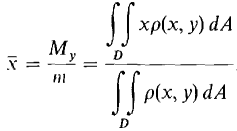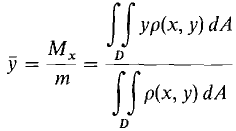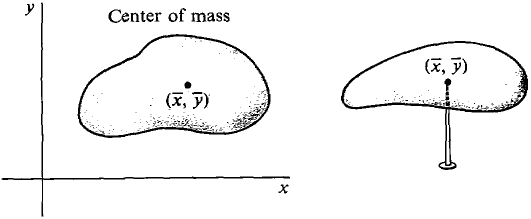| The ebook Elementary Calculus is based on material originally written by H.J. Keisler. For more information please read the copyright pages. |

|

Home  Multiple Integrals Multiple Integrals  Application to Physics Application to Physics  Center Of Mass Center Of Mass |
|||||






|
|||||
Center Of Mass
The center of mass of the object is the point
JUSTIFICATION The piece of the object on an element of area ΔD has mass Δm ≈ ρ(x, y) ΔA (compared to ΔA). A point mass m at (x, y) has moments Mx = ym, My = xm. Therefore the piece of the object at ΔD has moments ΔM, ≈ y Δm ≈ yp(x, y) ΔA (compared to ΔA), ΔMy ≈ x Δm ≈ xp(x, y) ΔA (compared to ΔA). The double integrals for Mx and My now follow from the Infinite Sum Theorem. An object will balance on a pin at its center of mass (Figure 12.4.3). The center of mass is useful in finding the work done against gravity when moving the object. The work is the same as if the mass were all concentrated at the center of mass, and is given by W = mgs where s is the distance the center of mass is raised and g is constant.
Figure 12.4.3
|
|||||
Home  Multiple Integrals Multiple Integrals  Application to Physics Application to Physics  Center Of Mass Center Of Mass |
|||||
Last Update: 2010-11-25


 with coordinates
with coordinates


